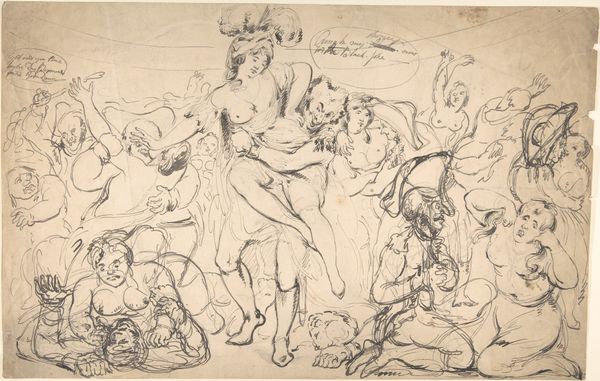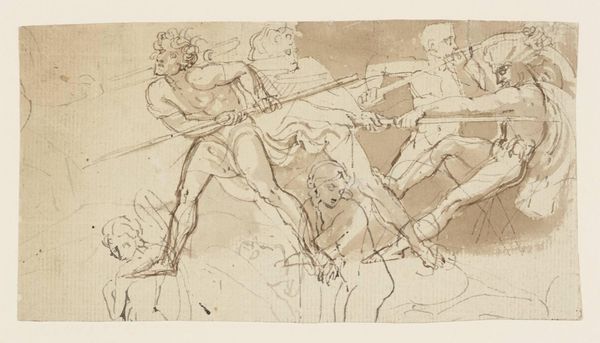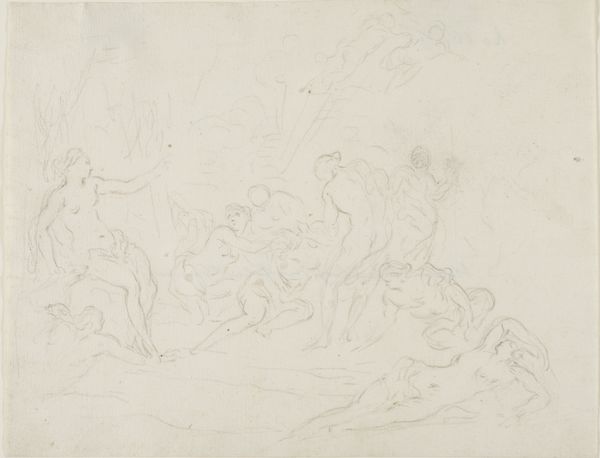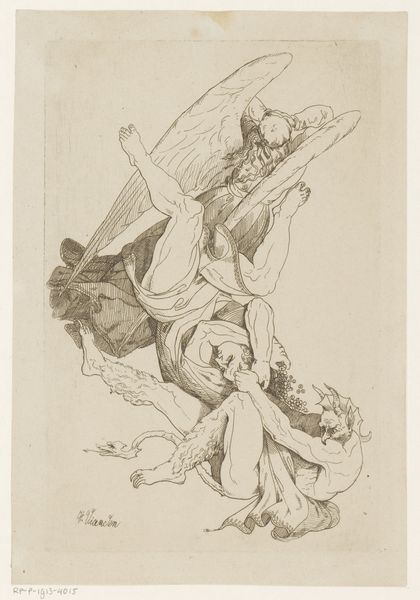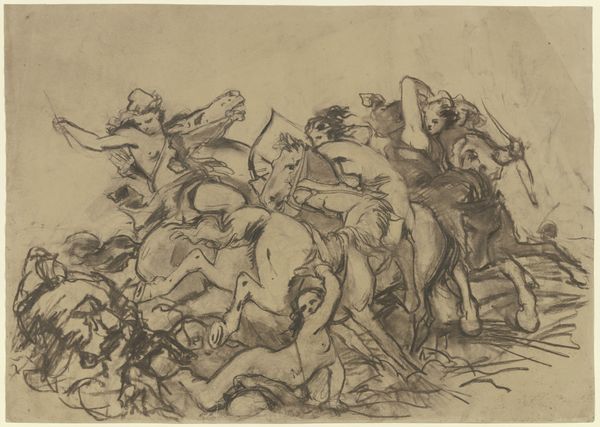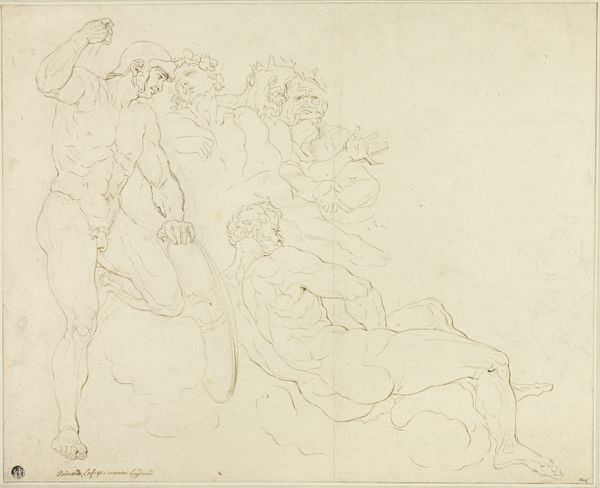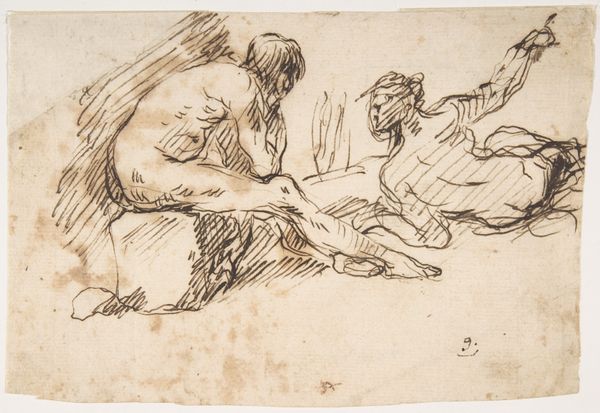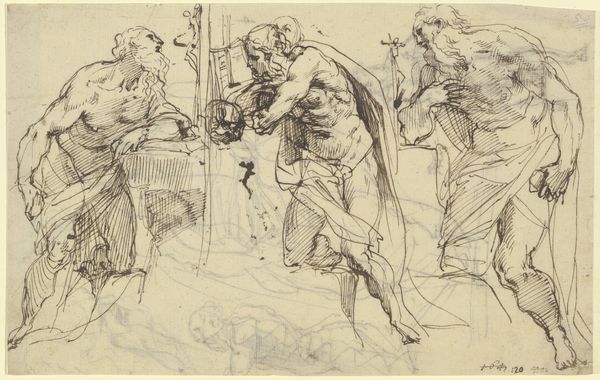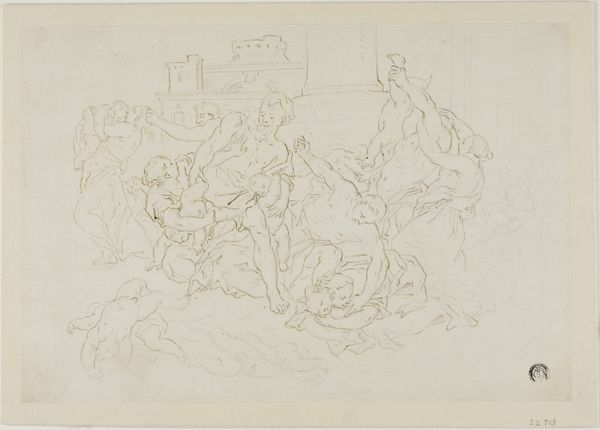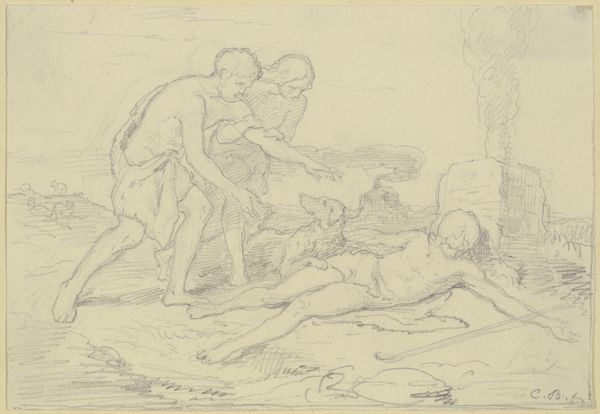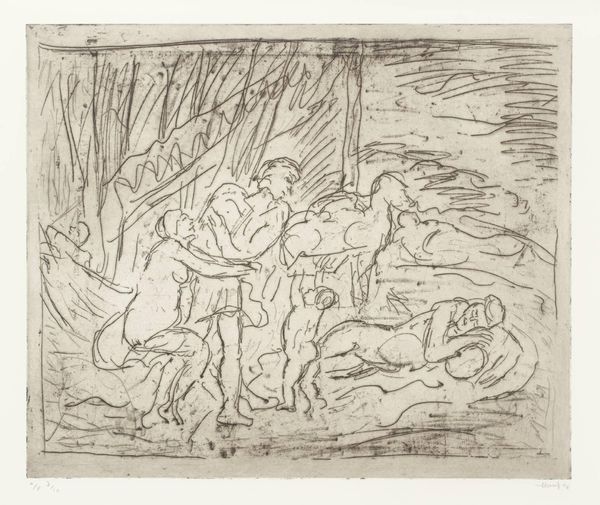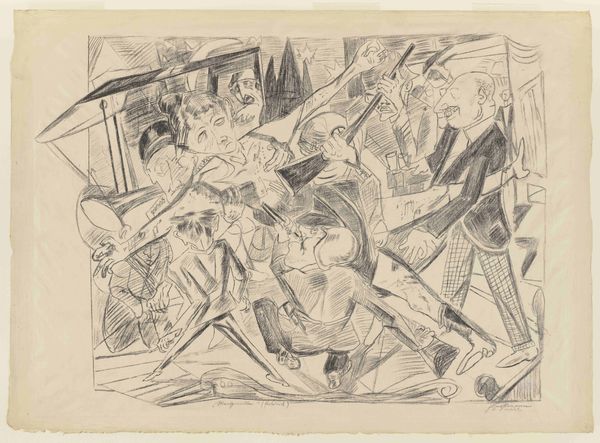
drawing, pencil
#
drawing
#
light pencil work
#
narrative-art
#
figuration
#
pencil
#
history-painting
#
academic-art
Dimensions: height 228 mm, width 402 mm
Copyright: Rijks Museum: Open Domain
Editor: Here we have "The Plague of Fiery Serpents and the Bronze Serpent", an 18th-century pencil drawing, currently at the Rijksmuseum. It’s unattributed, sadly. My initial impression is one of frantic movement, with all these figures wrestling with snakes! What story do you see being told in this work? Curator: It depicts a scene from the Book of Numbers. God sent serpents to punish the Israelites, and the only cure was to look upon a bronze serpent made by Moses. The plague then, isn't just a plot point. Think about what plagues signify historically - moments of social upheaval and moral questioning. Does the artist convey a political message by depicting these figures as idealized, heroic nudes? Is it a reflection of power dynamics, religious beliefs and societal anxieties? Editor: I see your point! These figures are classical, which seems at odds with the desperate situation. Does that classical style suggest something about the artist’s patrons, maybe their education and status? Curator: Precisely. The Academic art style connected with educated elites and suggested moral virtue. The composition focuses on individual suffering within the narrative. Consider the use of the "serpent" motif itself; beyond its literal representation here, what other symbolic interpretations might have existed for viewers at the time? Editor: So, snakes weren't just snakes back then; they also signified… Curator: Temptation, danger, even medicine. Think of the staff of Asclepius. The politics of imagery, what symbols they chose, where and for whom the works were exhibited - these shape our understanding. It prompts us to see beyond the biblical tale. Editor: This has really changed how I see it, from just a biblical scene to a comment on society and power. I’m now wondering, how were such images received and interpreted back in the 18th century? Curator: The narratives are deeply ingrained within cultural frameworks, yet artistic interpretations allow a deeper reflection on their impact. Looking at the cultural and historical context lets us see art as more than just aesthetically pleasing images.
Comments
No comments
Be the first to comment and join the conversation on the ultimate creative platform.

